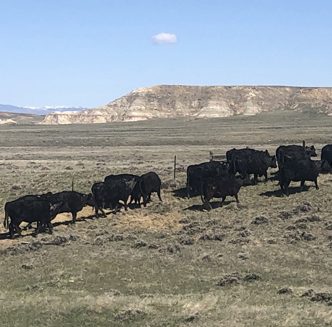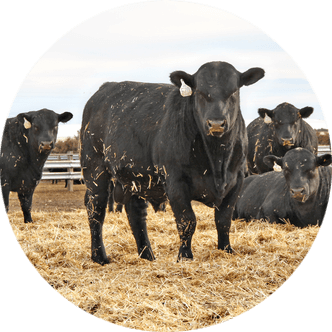UW Extension Education: Cost Per Pound of a Feed Nutrient
Sourcing high-quality and cost-effective feedstuffs are critical to the success of any feeding operation.
Calves and lambs being fed for slaughter require a diet high in energy and protein to support bone and muscle growth. Dried distillers’ grains (DDGs) – a byproduct of the ethanol industry – have been successfully used in formulating rations for feeder calves and lambs.
The following are some considerations for using DDGs in growing rations.
Nutrient profile
DDGs are commonly a byproduct of corn ethanol production, but other grains such as wheat can be used as well.
Coming in around 94 percent dry matter (DM), DDGs provide 12 percent crude fiber, 43 percent neutral detergent fiber and 17 percent acid detergent fiber. On a DM basis, DDGs contain around 23 percent crude protein and are rated at 87 percent total digestible nutrients (TDN).
Due to the higher phosphorous and sulfur content of DDGs, the use of these products can lead to conditions like urinary calculi and polioencephalomalacia if not properly balanced with other ingredients in the ration, namely calcium.
To avoid these issues, the calcium-to-phosphorous ratio should be two to one, and total sulfur content of the diet – including water sources – should not exceed 0.4 percent.
Calculating costs
Feed and transportation costs are perhaps the two biggest considerations for an affordable ration formulation. It is often helpful to calculate and compare the cost of a certain feed ingredient based on its nutrient content.
Since protein is often the limiting factor in high-quality diets, it is often chosen as the basis for decision-making. The delivered price for a feed, which includes the cost of feed and hauling, should be used for the greatest accuracy.
Estimated costs for the capital and labor required to make the ration available for the animal should also be included.
For example, running a mixer wagon may have a higher cost than rolling out a bale of hay with a pickup.
Since many feeds vary in water content, the nutrient levels should be compared on a DM basis for consistency. Without accounting for differences in water and nutrient content in the feed, it is difficult to make an apples-to-apples comparison between two alternatives.
First, determine the weight of DM in the feed. Most feeds contain some water, even if it is minimal.
Second, multiply the amount of DM by the percentage of protein in decimal form. This will give the weight of protein in a given amount of dry feed.
Next, divide the delivered cost per ton by the weight of protein per ton. This will yield the price per pound of protein for the feed.
An example may be helpful to illustrate this process.
Example: WDGs versus DDGs
One ton of DDGs with 94 percent DM will only contain 1,880 pounds DM. If this 1,880 pounds of DM is 23 percent protein, then one ton would contain 432 pounds of protein.
Assuming the delivered cost is $400 per ton, the price per pound of protein would be 93 cents per pound.
A ton of wet distillers’ grains (WDGs) might contain only 65 percent or 1,300 pounds DM.
If the protein content is the same as above, a ton of WDGs will only contain 299 pounds of protein. If it could be delivered for $250 per ton, the price per pound of protein is 84 cents per pound.
In this case, WDGs could be purchased cheaper than the dried counterpart.
Nevertheless, there are different considerations for mixing and storing the two.
WDGs usually spoil faster than DDGs and result in a wetter ration. However, WDGs may have a higher TDN rating than the dried alternative.
Many factors can influence the nutritional content of distillers’ grain products, so regular feed and water testing is critical for accurate ration formulation.
High transportation costs often discourage the use of distillers’ grains in many areas of Wyoming. Nonetheless, distillers’ grains provide a combination of protein and energy that surpasses most forages.
Jedidiah Hewlett is the University of Wyoming (UW) Extension educator serving Converse County. He can be reached at jhewlett@uwyo.edu or 307-358-2417. This article was originally written for the UW Sheep Task Force’s Sheep Sheet publication.





